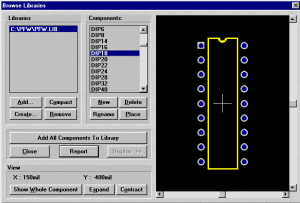PCB Reverse Engineering Electronic Analysis
PCB Reverse Engineering Electronic Analysis is an necessary step when Clone Printed Wiring Board:
First of all, let’s talk about the objective of electrical /electronic analysis, perform electrical / electronic analysis defines the input /output parameters, as a electrical connection and mechanical platform of electronic device, Printed wiring board will always has input and ouput place where we should clarify the voltage, current and power value; component characteristics, circuit paths, materials, crating and bonding necessary to reproduce the candidate through reverse engineering. The documentation available on the candidate may range anywhere from complete to nonexistent.
2nd we need to validate documentation to verify:
a. Design parameters include the Printed wiring board layout and schematic diagram;
b. Prescribed test procedures is provided by customers or designed by reverse engineering expertise;
c. Configuration and dimensional tolerance data include software and hardware;
d. Producibility or a like item at reduced cost not using unrestricted or proprietary information, and
e. QC/QA (quality assurance) information to ensure the stable quality output and high first yield rate;
If documentation on the candidate is incomplete or not available, the following approach may need to be taken:
a. Input/out parameters may need to be determined using data from the next higher assembly,
b. Circuit paths may need to be documented,
c. Circuit components may need to be identified and function characteristics ascertained,
d. A determination may need to be made that substitute items can be used without changing circuit parameters, and
e. An equivalent circuit design may need to be made for the candidate under consideration,
Design validation of the reverse engineered circuitry may consist of one or both of the two major electronic circuit disciplines, analog and/or digital. Documentation should include the classical engineering tools and definitions.
a. Analog circuit designs should be checked for:
(1) Circuit stability,
(2) Step response,
(3) Frequency response,
(4) Gain and phase linearity,
(5) Slow rate,
(6) Non-linear characteristics,
(7) Thermal characteristics,
(8) Ripple and noise,
(9) Input/output parameter and impedances,
(10) Power consumption (max/min), and
(11) Specialized functional parameters,
b. Digital circuit designs should be checked for:
(1) Input/output level (with and without stimuli),
(2) Proper bias levels,
(3) Rise and fall time of signaling pulses,
(4) Clock frequency and duty cycle,
(5) Circuit interaction and component characteristics,
(6) Thermal characteristics,
(7) Input/output impedances,
(8) Functional parameters of circuitry/effects of fault simulation,
(9) Power consumption of circuitry (max/min), and
(10) Specialized functional parameters.


